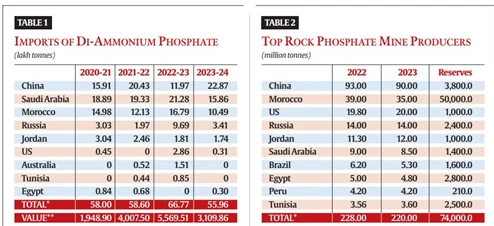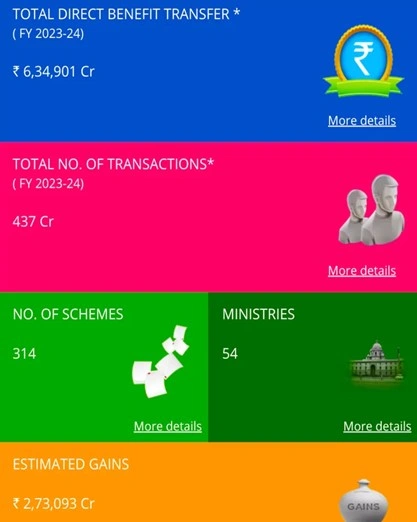Thursday, 19th September 2024
Jute - The golden fibre
Why in the news?
- Jute, India’s second-largest cash crop after cotton, is vital for Assam’s economy, providing jobs and eco-friendly alternatives to plastic.
Potential Climate Impact of Jute Production:
- Biodegradable Alternative: Jute is biodegradable and serves as an eco-friendly alternative to plastic products, helping to reduce environmental pollution.
- Carbon sequestration: Jute cultivation contributes to carbon sequestration, helping to mitigate the effects of climate change.
- Improving Soil Health: Jute acts as a soil protector, preventing soil erosion and improving soil fertility, which is essential for sustainable agriculture
- Important Features: Jute is a rainfed crop and requires minimal use of fertilisers and pesticides, making it a more sustainable crop than other cash crops such as cotton
- Supporting rural livelihoods: The jute industry supports the livelihoods of about 14 million people in India, contributing to rural economies and climate resilience of communities
- Climate Change Adaptation: Jute cultivation can adapt to different climatic conditions, making it a viable crop in the face of a changing climate.
Initiatives for the jute industry:
- Jute-Improved Farming and Rating Exercises (ICARE): To improve jute farming practices through certified seeds, advanced machinery & rating techniques to increase farmers income and productivity.
- Jute Diversification Scheme: Encourages innovation and diversification in the sector, and supports the development of new jute-based products.
- Increase in Minimum Support Price (MSP): The MSP for raw jute was increased from ₹500 crore to ₹700 crore, providing better price movement for farmers.
- Incentive Scheme for Acquisition of Plant and Machinery (ISAPM): Provides financial incentives for modernization of jute mills and supports industrial development.
- Jute Smart Plan: To grow the jute industry through sustainable technologies, innovations and practices, encouraging environmentally friendly alternatives.
|
About Jute:
|
Source: (TH)
4 Key Space Projects Receive the Go-Ahead from Cabinet
Why in the News?
- The Union Cabinet cleared ₹22,750 crore for four space projects to be launched by ISRO with the Vision 2047.
What are the 4 Space Projects Approved by the Cabinet?
- About the Chandrayaan-4 Mission:
- Budget allocated and launch :
- India’s 4th mission to the Moon, for which a budget of ₹2,104.06 crore was cleared, is slated for launch in 2027.
- The approved cost for the mission includes -
- Spacecraft development and realisation,
- Two launches of Launch Vehicle Mark-3 (LVM-3),
- External deep space network support,
- Conducting special tests for design validation.
- Objectives:
- It will be a remote mission, aiming to bring rock samples from the lunar surface back to Earth after a soft landing.
- India became the first country to land a probe on the lunar south pole.
- Significance:
- Expand on the technology developed in Chandrayaan-3 by adding elements like lunar docking, precision landing, and sample collection.
- Eventually for an Indian landing on the Moon (planned by year 2040) and return safely back to Earth.
- Budget allocated and launch :
- About the Venus Orbiter Mission (VOM):
- Budget allocated and launch date: The ₹1,236 crore VOM mission has set a target of March 2028. This will be India’s 2nd mission to a planet, after the Mars Orbiter Mission in 2014.
- Objectives:
- India’s first scientific mission to Venus involves sending an orbital spacecraft to study the planet closest to Earth.
- It aims to enable scientists to better understand the Venusian atmosphere, and geology and generate data that gives information into the planet’s thick atmosphere.
- Significance:
- Venus is thought to have developed under Earth-like conditions, but a runaway greenhouse effect caused the planet to deviate, rendering it inhospitable for life.
- About the Bhartiya Antriksh Station (BAS):
- Budget allocated and launch date:
- The Gaganyaan follow-on mission, the project saw a net additional funding of ₹11,170 crore.
- The first module of the project (dubbed BAS-1) targets a launch in 2028 and the target to complete the entire project is for 2035.
- Objectives: BAS aims to establish an Indian space station that will orbit 400 km above the Earth’s surface. It will allow astronauts to stay in orbit for 15-20 days.
- Significance: The massive 52-tonne machine will serve as a research platform for Indian astronauts and scientists to conduct experiments in microgravity, astronomy, and Earth observation.
- Budget allocated and launch date:
- About the Next Generation Launch Vehicle (NGLV):
- Budget allocated and launch date:
- In total, ₹8,240 crore was approved for NGLV, which includes development costs, three developmental flights, essential facility establishment, programme management and launch campaign.
- It will take 96 months - with the first launch taking place in 84 months.
- Objective:
- It will be a new launch vehicle that is capable of high payload, and will be cost-effective, reusable, and has the potential to be commercially viable.
- This launch vehicle is one of the requirements for setting up a BAS.
- Significance:
- NGLV will have three times the present payload capability with 1.5 times the cost compared to LVM-3.
- It will also have reusability resulting in low-cost access to space and modular green propulsion systems.
- Budget allocated and launch date:
Source: TOI
Credit Guarantee Fund Trust for Micro and Small
Why in the news?
- Recently, Women-owned micro and small enterprises will get enhanced credit guarantee coverage of 90 percent under the CGTMSE scheme.
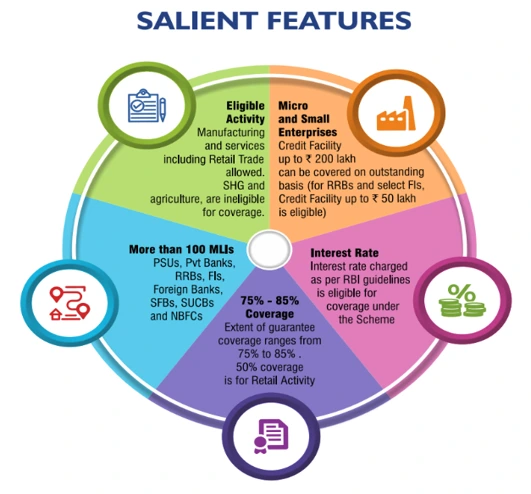
What is the CGTMSE program?
- About:
- The Government of India (GoI) initiated in 2000 the provision of unsecured loans to micro and small enterprises.
- Objective:
- To catalyse the flow of institutional credit to Micro & Small Enterprises (MSEs).
- Scope:
- To facilitate access to credit for the unserved and underserved MSE segment of the MSME Sector, making the availability of credit from conventional lenders.
- Funding:
- The CGTMSE corpus is sponsored by GoI and SIDBI in the ratio of 4:1.
- The MSME Ministry and the Small Scale Industries Development Bank of India have set up the Credit Guarantee Fund Trust for Micro and Small Enterprises (CGTMSE) to implement the CGTMSE scheme
- Eligible Lending Institutions:
- Scheduled commercial banks (Public Sector Banks/Private Sector Banks/Foreign Banks) and select Regional Rural Banks ( category by NABARD).
- National Small Industries Corporation Ltd. , North Eastern Development Finance Corporation Ltd. , SIDBI, selected Small Finance banks, and NBFCs have also been made eligible institutions.
Eligible Credit Facility under CGTMSE:
- Collateral-Free Credit Support:
- Collateral free credit support of up to Rs. 5 crores to MSEs, extended by the CGTMSE.
- Microenterprises:
- The extent of guarantee cover is 85% for microenterprises for credit up to Rs. 5 lakhs.
- For credit ranging from Rs. 5 lakhs to Rs. 500 lakhs, the extent of guarantee cover is 75%.
- North-East Region and Other Specified Areas:
- Cover is 80% for loans/credits in the NorthEast Region (incl. Sikkim, UT of Jammu & Kashmir, and UT of Ladakh) for credits up to Rs. 50 lakhs.
- Above Rs.50 lakhs, guarantee cover is 75%.
- Special Categories (SC/ST, PwDs, etc.):
- Cover is 85% for MSMEs owned/operated by SC/ST entrepreneurs, Persons with Disabilities (PwDs), MSEs situated in Aspirational Districts, ZED certified MSEs and MSE promoted by Agniveers.
- Extent of guarantee cover is 90% for MSME owned/operated by women.
- General Borrowers:
- For all other categories of borrowers, the Extent of guarantee cover is 75%.
- In Case of Default:
- The trust settles the claim up to 75% (85%/80% wherever applicable) of the amount in default of the credit facility extended.
Source: BS
SUBHADRA Scheme
Why in the news ?
- Recently, the Prime Minister of India launched ‘SUBHADRA’, the flagship Scheme of Government of Odisha, in Bhubaneswar, Odisha.
About SUBHADRA Scheme:
- Scheme Overview:
- It is named after Goddess Subhadra, the younger sibling of Lord Jagannath, the presiding deity of Odisha.
- All eligible beneficiaries between the age of 21-60 years would receive Rs. 50,000/- over a period of 5 years between 2024-25 to 2028-29.
- An amount of Rs 10,000/- per annum in two equal instalments will be credited directly to the beneficiary’s Aadhaar-enabled and DBT-enabled bank account.
- Operational Mechanism:
- Deposited directly into the beneficiary’s Aadhaar-enabled single-holder bank account.
- e-KYC mandatory for the scheme.
- A Subhadra Debit Card will be issued to the beneficiaries.
- Incentive Program:
- 100 beneficiaries with the highest number of digital transactions in each gram panchayat and urban local body area will receive an additional incentive of Rs 500.
- Exclusion Criteria:
- Women from economically well-off families, government employees, and income-tax payees will not be eligible for the scheme.
- Women who receive assistance of Rs 1,500 or more per month (or Rs 18,000 or more per year) under any other government scheme will also be excluded.
- Registration Process:
- There is no last date to register; the process will continue until all eligible beneficiaries have been registered.
Source: PIB
Windfall Tax
Why in the news ?
- Recently, the government slashed the windfall tax on domestically produced crude oil to 'nil' per tonne.
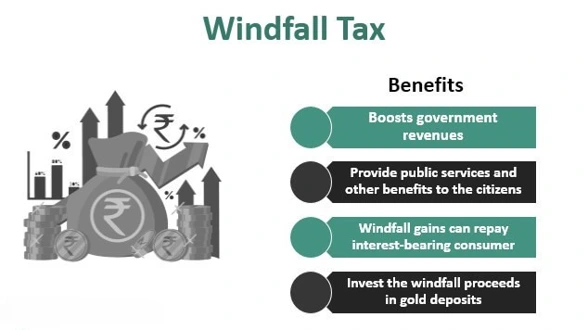
About the windfall tax:
- About:
- It is a higher tax imposed on specific industries when they make unusual and above-average profits.
- The term “windfall” refers to an unexpected increase in profit, and the tax on windfall is called a windfall tax.
- Circumstances for Imposition:
- These taxes are imposed during unforeseen events like wars, epidemics, or policy changes that lead to unusual profitability in certain industries.
- Applicability:
- Industries generally subject to the targeted wind tax include oil, gas and mining.
- Some personal taxes—such as property taxes or taxes on lottery winnings—can also be called withholding taxes
- Purpose:
- The primary purpose of the unrealized tax is to apply a portion of this extraordinary profit, which appears to be more than ordinary profit, to the public good.
- Governments emphasise that these benefits are due not only to the efforts of the tax community, but also to external factors.
- It is also used as a supplementary income for the government.
Source: HT
Seaweeds
Why in the news ?
- Recently, the Department of Fisheries under the Ministry of Fisheries, Animal Husbandry and Dairying has designated the ICAR-Central Marine Fisheries Research Institute (CMFRI) as a centre of excellence for seaweed cultivation.
About Seaweeds:
- Characteristics:
- Seaweeds are simple plants without distinct tissues like roots, stems, or leaves; instead, they have leaf-like structures.
- In areas like the intertidal and shallow subtidal zones of the sea, you can find larger seaweeds attached to rocks and corals.
- There are also microscopic seaweeds, like phytoplankton, which play a crucial role in marine food chains and float in the water.
- Some seaweeds, like kelp, can be massive and form underwater “forests” in the sea.
- Most seaweeds are of medium size and come in various colours like red, green, brown, and black.
- Distribution:
- Brown algae, such as kelps and fucus from the Phaeophyceae family, are common seaweeds.
- They are not typically found in tropical waters but are abundant in cooler regions.
- Kelps, particularly Macrocystis and Nereocystis species, can be among the largest algae, reaching lengths of up to 33 meters (100 feet) in the Pacific and Antarctic.
- Laminaria, another type of kelp, is widely distributed along the Pacific and Atlantic coasts.
- In areas like the Gulf Stream and the Sargasso Sea, you can find floating clusters of Gulfweed, known as Sargassum.
- Seaweeds classified as red algae (Rhodophyta) include laver, gelidium, and dulse (Palmaria palmata or Porphyra).
- Along rocky Atlantic shores, the lower half of the zone exposed at low tide is covered in various Chondrus species, including Irish moss (C. crispus).
Source: TH
Karam Festival
Why in the news ?
- Recently,the Karma festival has been celebrated in Jharkhand and other tribal states of India.
About Karam Festival:
- About: Karma Puja is related to the harvest and a tribute to the Karam tree. This tree symbolises fertility, prosperity and everything that is auspicious.
- Origin: The origin of the festival can be traced to the beginning of agriculture by tribal communities.
How is it celebrated?
- Preparation:
- About a week before the festival commences, young women bring clear sand from the river, in which they sow seven types of grains.
- Main Ritual:
- On the day of the festival, a branch of the Karam tree is planted in the courtyard or ‘akhra’.
- Devotees come with jawa (hibiscus) flowers, and the pahan (priest) worships the Karam Raja. Dancing and singing of traditional Karam songs follow.
- The festival concludes with the immersion of the Karam branch in a river or pond, and the jawa is distributed among the devotees.
- Festival end:
- Towards the end of the Karam festival, branches from sal or bhelua trees are often planted in the fields with the hope that the Karam Raja/ Devta will protect their crops.
- Date:
- It is traditionally celebrated on the Ekadashi tithi (eleventh day) of the lunar fortnight in the month of Bhado/ Bhadra, which corresponds to August-September in the Gregorian calendar.
- Tribes:
- The festival is popular especially among the Munda, Ho, Oraon, Baiga, Kharia, and Santhal peoples.
- Regions:
- It is mainly celebrated in Jharkhand, West Bengal, Bihar, Madhya Pradesh, Chhattisgarh, Assam, and Odisha.
Source: IE
Metformin
Why in the news?
- Recently, study titled ‘Metformin slows growth in male monkeys’ revealed that metformin, a commonly used diabetes drug, slows the growth of male monkeys, especially in their brains
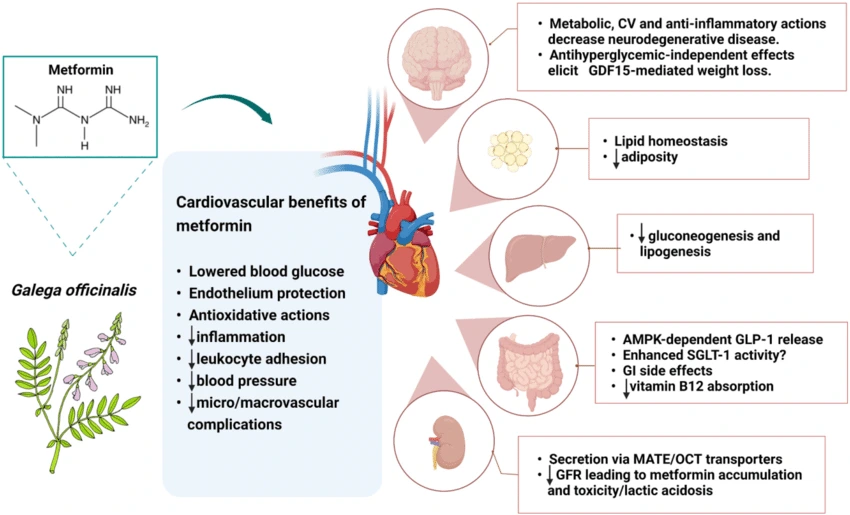
What is metformin?
- Metformin is an antidiabetic drug (biguanide).
- It is widely used to treat type 2 diabetes, polycystic ovary syndrome (PCOS).
- It was first introduced in France in the 1950s to treat diabetes.
- Metformin is a derivative of guanidine, found in Goat's Rue, an herbal remedy that has long been used in Europe.
- Benefits of Metformin
- Metformin has effects beyond diabetes control.
- This reduces the risk of cancer.
Source: IE
India’s semiconductor future
Context:
- The government launched the semiconductor industry in 2021 with vital national security investments in areas such as defence and telecommunications with US$10 billion.
- Geopolitical tensions and the Covid-19 pandemic highlighted the risks of foreign semiconductor imports from Taiwan , the emphasis on over-reliance on Japan’s presence is South Korea.
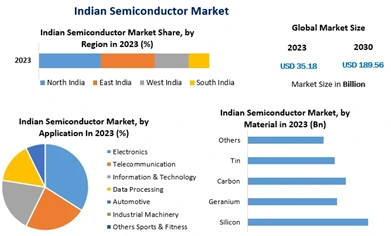
What is the current scenario of the semiconductor industry in India?
- Current status of semiconductor industry in India:
- Market : The market size in 2022 is estimated to be around US$. $26.3 billion
- Forecasted Growth: To reach US$271.9 billion by 2032, at a CAGR of 26.3%.
- Imports: 2021: $5.36 billion
- Exports: 2022: $0.52 trillion.
- Government Services:
- India Semiconductor Mission (ISM): A division under Digital India Corporation dedicated to building a robust semiconductor and display ecosystem.
- 50% of the operating costs of financial support for semiconductor fabs and display fabs.
- Semicon India Strategy: Launched in December 2021 with an investment of ₹76,000 crore ($9.2 billion) to increase production of semiconductors and displays.
- To support further growth, the FY24 budget has been increased to ₹6,903 crore ($833.7 million).
- International Collaboration:
- Holds discussions with the European Commission on strengthening the semiconductor ecosystem as part of the EU-India Trade and Technology Council.
- MOC and Japan will strengthen the semiconductor supply chain flexibility between the two countries.
What is the Significance of Semiconductors for India?
- Economic Growth and Industrial Development
- Semiconductors are critical to India’s electronics manufacturing, aiming for a significant share of the global market projected to hit USD 1 trillion by 2030.
- The 2021 USD 10 billion Semiconductor Mission could create 35,000 direct and 100,000 indirect jobs, boosting electronics manufacturing to USD 300 billion by 2026.
- Technological Self-Reliance and Innovation
- India imports 65-70% of electronic components, mainly from China.
- Initiatives like the Design Linked Incentive (DLI) aim to foster domestic innovation, crucial for 5G, AI, and quantum computing.
- Global Supply Chain Integration
- India’s semiconductor initiatives seek to enhance its 3% contribution to the global electronics value chain.
- Policies like Production-Linked Incentives (PLI) aim to attract global players and integrate India into international supply networks.
- Job Creation and Skill Development
- The semiconductor sector can create high-quality jobs and promote STEM education.
- Specialised skills in chip design, nanofabrication, and advanced packaging will drive skill development in cutting-edge technologies.
What are the Key Challenges in India's Semiconductor Path?
- Infrastructure Challenges
- India’s uneven infrastructure, including unreliable power, water scarcity, and poor transport, hampers semiconductor plant operations.
- For example, power shortages during the 2024 heat wave affected industrial activities, including semiconductor manufacturing.
- Talent Gap
- Despite India’s engineering talent, there is a shortage of semiconductor experts.
- By 2027, India may face a deficit of 250,000 to 300,000 skilled semiconductor professionals, limiting ecosystem growth and global manufacturer attraction.
- High Manufacturing Costs
- Setting up semiconductor plants in India is more expensive than in established hubs like Taiwan or the U.S.
- Costs rose 4.9% in 2021 and 2.4% in 2022, making India less attractive for global semiconductor investments.
- Global Supply Chain Dynamics
- The semiconductor industry’s reliance on a global supply chain makes India vulnerable to disruptions, like the Russia-Ukraine conflict's impact on neon supply, crucial for chip manufacturing.
- Ensuring a stable supply of raw materials and components is vital for success.
- Environmental Concerns
- Semiconductor production is energy-intensive, contributing to 31% of global greenhouse gas emissions.
- India's focus on sustainable development creates challenges in balancing environmental concerns with industry growth.
- Competition from Other Emerging Markets
- India faces competition from countries like Vietnam, Malaysia, and Indonesia, which offer better incentives and infrastructure.
- Malaysia, for instance, attracted major companies like Infineon in the first wave of semiconductor investments.
What Steps can India Undertake to turn its Semiconductor Vision into a Reality?
- Enhance Semiconductor Education and Training
- Expand semiconductor engineering programs and partners like IISc Bangalore could collaborate with Taiwan Semiconductor Manufacturing Company with practical learning via state-of-the-art facilities.
- Develop Indigenous Chip Design Capabilities
- Set up chip design centres in tech hubs like Bangalore, Hyderabad, and Pune, and incentivize startups.
- The success of IIT Madras' Shakti processor highlights India's potential, and expanding similar initiatives can boost domestic chip design.
- Create a Robust Semiconductor Supply Chain
- Establish SEZs for the semiconductor ecosystem, offering tax breaks and streamlined regulations to global companies like Applied Materials or Lam Research.
- Establish a Sovereign Semiconductor Fund
- Launch a sovereign & Capital fund can prioritise cutting-edge technologies like 3nm and 2nm fabrication, positioning India at the forefront of innovation, similar to South Korea’s approach.
- Implement a "Chip Diplomacy" Strategy
- India could partner with Japan to establish a joint semiconductor research centre for advanced packaging, helping overcome technology acquisition hurdles.
- Develop a "Green Semiconductor" Initiative
- Partner with firms like Applied Materials to set up pilot fabs using recycled water and renewable energy, attracting environmentally conscious investors and aligning with global sustainability trends.
- Establish a National Semiconductor Commons
- A national network of nanofabrication facilities, similar to the US NNIN, would foster innovation in chip design and manufacturing, promoting collaboration between academia, industry, and government.
|
UPSC Civil Services Examination, Previous Year Question (PYQ) Prelims: Q:1 Which one of the following laser types is used in a laser printer? (2008)
Ans: (c)
Q:2 With reference to solar power production in India, consider the following statements: (2018)
Which of the statements given above is/are correct?
Ans: (d) |
Source: BS
Share the article
Edukemy’s Current Affairs Quiz is published with multiple choice questions for UPSC exams
MCQ
Get Latest Updates on Offers, Event dates, and free Mentorship sessions.

Get in touch with our Expert Academic Counsellors 👋
FAQs
UPSC Daily Current Affairs focuses on learning current events on a daily basis. An aspirant needs to study regular and updated information about current events, news, and relevant topics that are important for UPSC aspirants. It covers national and international affairs, government policies, socio-economic issues, science and technology advancements, and more.
UPSC Daily Current Affairs provides aspirants with a concise and comprehensive overview of the latest happenings and developments across various fields. It helps aspirants stay updated with current affairs and provides them with valuable insights and analysis, which are essential for answering questions in the UPSC examinations. It enhances their knowledge, analytical skills, and ability to connect current affairs with the UPSC syllabus.
UPSC Daily Current Affairs covers a wide range of topics, including politics, economics, science and technology, environment, social issues, governance, international relations, and more. It offers news summaries, in-depth analyses, editorials, opinion pieces, and relevant study materials. It also provides practice questions and quizzes to help aspirants test their understanding of current affairs.
Edukemy's UPSC Daily Current Affairs can be accessed through:
- UPSC Daily Current Affairs can be accessed through Current Affairs tab at the top of the Main Page of Edukemy.
- Edukemy Mobile app: The Daily Current Affairs can also be access through Edukemy Mobile App.
- Social media: Follow Edukemy’s official social media accounts or pages that provide UPSC Daily Current Affairs updates, including Facebook, Twitter, or Telegram channels.

